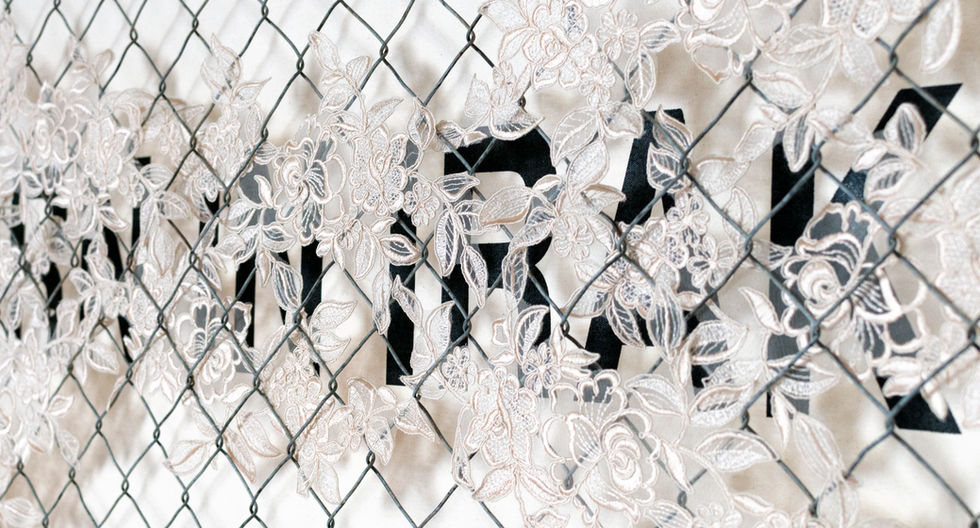
As a war refugee and as part of this second generation, I developed a powerful need to understand and to recall a past that I did not consciously remember. By this wall project, I tried to re-create my absent memory and to project a part of my childhood that up until now has been totally obscure.
175x118 cm

The background of the art work is 100% cotton raw canvas with the text « BORN IN IRAK » sprayed. The fence is placed on a wooden frame that was worked with the Japanese technique « Shou-sugi-ban ».
My name is Kocer Hamo.
I was born in 1986 in Kurdistan, in the north of Iraq. My father and his friends used to build walls in the mountains to protect us.
I spent my early childhood surrounded by walls made of fences. My first playground was a refugee camp in the east of Turkey and my mother used to sew us dresses from shiny fabrics and jackets made of blankets.
All I have from this special and intense life are few old photographs and the testimony of my family. I do not remember anything.
As a war refugee and as part of this second generation, I developed a powerful need to understand and to recall a past that I did not consciously remember. By this wall project, I tried to re-create my absent memory and to project a part of my childhood that up until now has been totally obscure.
Since 2014, I work as a translator for the migration department of the Swiss confederation. Through my work with refugees, I keep facing these experiences that I lived previously and it has contributed to the elaboration of this project.
Nowadays, walls keep on being built all over the world to delimitate areas, to gather populations, to separate countries and cultures. Also, we see everyday walls dividing people from one social statue to another. But most of all, invisible walls are growing too fast in our minds and divide people from each other. These walls are probably made of fears and of a lack of knowledge.
As we live and evolve in individualist and cosmopolitan systems, I think answers to these questions are more and more urgent. In this sense, art can be a good way to approach these topics.
In the street art, graffiti artists use the walls wonderfully and freely as an expression support to make cities more colourful. They probably look at the street with attention, trying to find the next lucky place to be painted.
I choose my piece of wall consciously from the fence of my childhood and I worked it my way to make it shiny.
Kocer Hamo
written with Nasca Hamo






